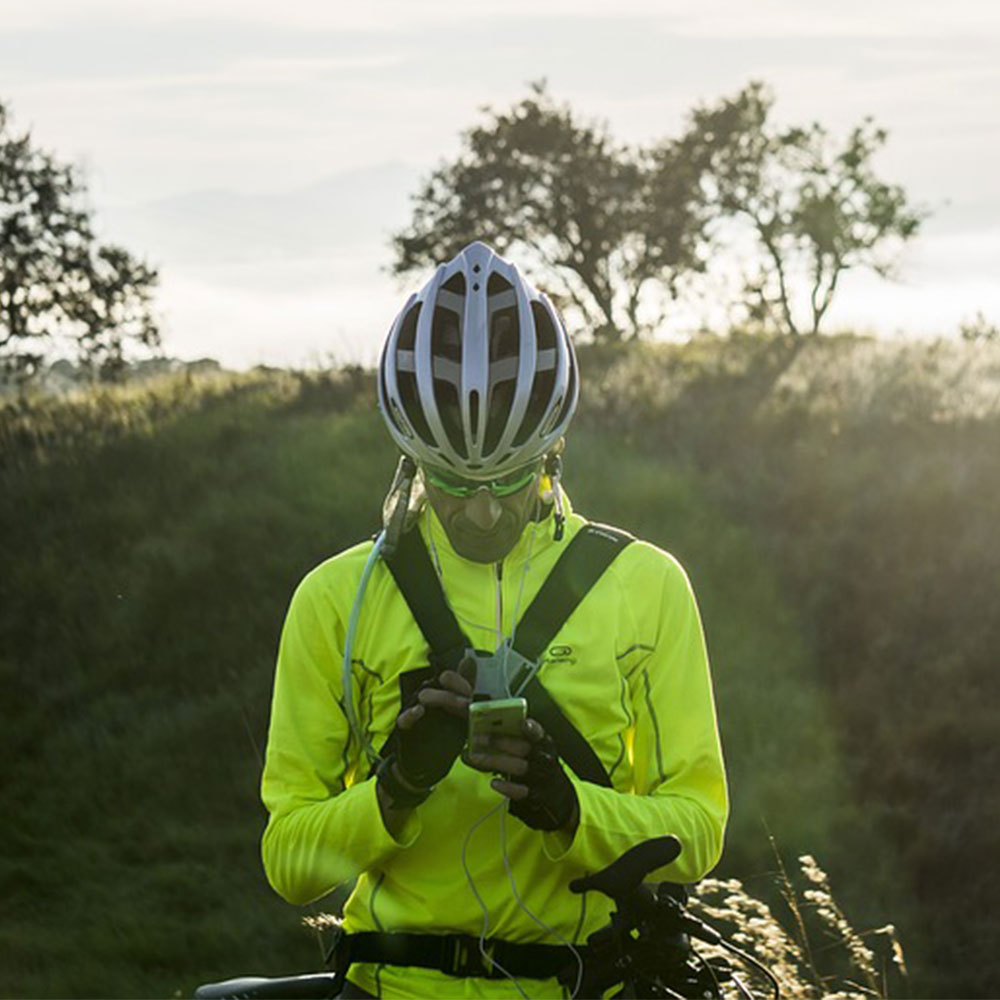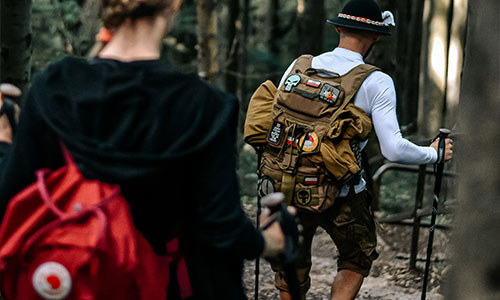Unlocking the Benefits of Trekking Poles for Improved Hiking Experience
Author

Chris shares his passion for cycling, hiking, skiing, and climbing from Buxton, in the Peak District. As a blogger for Outdoor Look, Chris shares outdoor tips and indoor tricks to help you get the most out of your time spent outside. When he's not out adventuring he's making videos or trying to keep up with his 4-year-old son.
Trekking poles, when utilised effectively, can significantly enhance your hiking and trekking adventures. In this informative article, we will delve into the various advantages of using trekking poles and address some potential considerations to keep in mind. By understanding the benefits they offer, you can make an informed decision about incorporating trekking poles into your hiking gear.

- Enhancing Stability and Reducing Strain:
- Improved Joint Support:
Research has shown that trekking poles can substantially reduce strain on your knees and joints, particularly during downhill descents. By distributing your weight more evenly, these poles act as additional support. To optimise knee relief, consider extending telescopic poles slightly when descending slopes, allowing them to reach ahead of your feet and minimise strain.
- Maintaining Balance and Stability:
Unpredictable terrains, such as slippery or uneven paths, can challenge your balance while hiking. Trekking poles provide valuable stability, allowing you to navigate such obstacles with greater confidence. The additional points of contact help distribute your body weight, ensuring you maintain your balance even on rugged trails.
- Enhancing Performance and Endurance:
- Assisting with Uphill Climbs:
Contrary to popular belief, trekking poles can be advantageous during uphill climbs. By utilising the poles to grip the terrain, you can distribute effort across your entire body, reducing fatigue in your legs. Adjusting the length of telescopic poles when transitioning to steep inclines ensures optimal balance and support.
- Expanding Range and Maintaining Pace:
Trekking poles have a psychological and physical impact on your hiking performance. Many users report increased energy levels and a heightened sense of endurance throughout the day. By minimising strain on your legs and establishing a rhythm with your poles, you can maintain a steady pace and cover more ground. Trekking pole users often experience a significant boost of approximately 50% in both speed and overall distance covered.
- Practical Benefits and Considerations:
- Testing Terrain and Providing Stability:
Trekking poles serve as valuable tools for gauging the depth of mud, bogs, icy patches, and water crossings. By probing the terrain with your poles, you can assess stability and potential hazards before committing your steps. This ensures a safer hiking experience and reduces the risk of slips and falls.
- Versatility as a Multi-Functional Tool:
In emergencies or when quick shelter setup is required, trekking poles can substitute for tent poles. By utilising the poles as supports for the tent flysheet, you can rapidly assemble temporary shelters, protecting from inclement weather. This versatility proves invaluable during unexpected rainstorms or when immediate shelter is necessary due to injuries.
- Reducing Hand Swelling and Improving Circulation:
Hiking without trekking poles often leads to blood and lymph pooling in the hands due to limited arm movement. By engaging your arms and actively using trekking poles, you promote better blood circulation, reducing the likelihood of hand swelling and discomfort during long hikes.
- Wildlife Deterrence:
In certain hiking environments, trekking poles can help deter curious or potentially dangerous animals. Creating some noise with your poles can alert wildlife to your presence and keep them at a safe distance. However, it is essential to exercise caution, respect wildlife habitats, and minimise disturbance to their natural behaviour.

Conclusion:
Trekking poles offer a wide range of benefits for hikers when used correctly. The advantages of using trekking poles, such as increased stability, reduced joint strain, enhanced performance, and practical applications, outweigh any potential considerations. While there may be minor inconveniences like adjusting the poles during navigation or encountering criticism from non-pole users, these should not overshadow the benefits gained.
Author

Chris shares his passion for cycling, hiking, skiing, and climbing from Buxton, in the Peak District. As a blogger for Outdoor Look, Chris shares outdoor tips and indoor tricks to help you get the most out of your time spent outside. When he's not out adventuring he's making videos or trying to keep up with his 4-year-old son.
- Speed Up Your Post-Hike Recovery with These 6 Essential Tips
- Cycling through Tranquil Roads and Coastal Views on the Isle of Wight
- The Essential Guide to Hiking Safety: 5 Tips Every Hiker Should Know
- Run Smart, Run Strong: Your Guide to Injury-Free Running
- Embrace Biking: Essential Tips for Beginners
Categories
- Sport (28)
- Product Reviews (3)
- Team Outdoor Look (7)
- Mike Wild (2)
- Mike Payton (2)
- Suse Hammond-Pears (3)
- Snowboarding (12)
- Latest Offers (105)
- Shop Talk (1)
- Competitions (7)
- Walking (413)
- Lifestyle Fashion (8)
- Travel (86)
- Kit Guides (176)
- Workwear Clothing (6)
- Safety Workwear (4)
- Health/Fitness (289)
- Skiing (91)
- Great Outdoors (1316)
- Cycling (92)
- January 2025
- December 2024
- November 2024
- October 2024
- September 2024
- August 2024
- July 2024
- June 2024
- May 2024
- April 2024
- March 2024
- February 2024
- January 2024
- December 2023
- November 2023
- October 2023
- September 2023
- August 2023
- July 2023
- June 2023
- May 2023
- April 2023
- March 2023
- February 2023
- January 2023
- December 2022
- November 2022
- October 2022
- September 2022
- August 2022
- July 2022
- June 2022
- May 2022
- April 2022
- March 2022
- February 2022
- January 2022
- December 2021
- November 2021
- October 2021
- September 2021
- August 2021
- July 2021
- June 2021
- May 2021
- April 2021
- March 2021
- February 2021
- January 2021
- December 2020
- November 2020
- October 2020
- September 2020
- August 2020
- July 2020
- June 2020
- May 2020
- April 2020
- March 2020
- February 2020
- January 2020
- December 2019
- November 2019
- October 2019
- September 2019
- August 2019
- July 2019
- June 2019
- May 2019
- April 2019
- March 2019
- February 2019
- January 2019
- December 2018
- November 2018
- October 2018
- September 2018
- August 2018
- July 2018
- June 2018
- May 2018
- April 2018
- March 2018
- February 2018
- January 2018
- December 2017
- November 2017
- October 2017
- September 2017
- August 2017
- July 2017
- June 2017
- May 2017
- April 2017
- March 2017
- February 2017
- January 2017
- December 2016
- November 2016
- October 2016
- September 2016
- August 2016
- July 2016
- June 2016
- May 2016
- April 2016
- March 2016
- February 2016
- January 2016
- December 2015
- November 2015
- October 2015
- September 2015
- August 2015
- July 2015
- June 2015
- May 2015
- April 2015
- March 2015
- February 2015
- January 2015
- December 2014
- November 2014
- October 2014
- September 2014
- August 2014
- July 2014
- June 2014
- May 2014
- April 2014
- March 2014
- February 2014
- January 2014
- December 2013
- November 2013
- October 2013
- September 2013
- August 2013
- July 2013
- June 2013
- May 2013
- April 2013
- March 2013
- February 2013
- January 2013
- December 2012
- November 2012
- October 2012
- September 2012
- August 2012
- July 2012
- June 2012
- May 2012
- April 2012
- March 2012
- February 2012
- January 2012
- December 2011
- November 2011
- October 2011
- September 2011
- August 2011
- May 2010
- April 2010
- March 2010
- February 2010
- January 2010
- November 2009
- October 2009
- September 2009


Submit a Comment